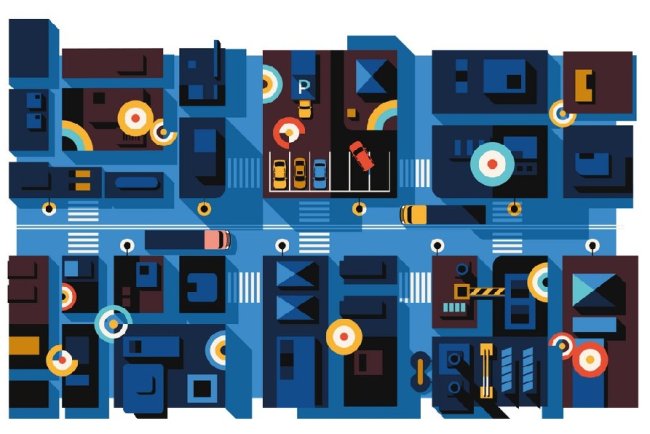How Smart Factories Can Enhance Efficiency And Workforce Security
This real-life use case is not an exception; in fact, it represents the future that’s already here

Smart factories are gaining mainstream prominence in the present times, led by a global need for transparency, security, and enhanced effectiveness. To the same end, when a global electronics manufacturer needed to enhance security and streamline operations, it opted for a passwordless and appless identity verification process. This provided quicker onboarding and was compliant with the government’s strict security standards. In addition, it offered a more streamlined experience to the users and ensured only authorised personnel could access critical manufacturing systems, thus ensuring operational integrity and safeguarding the intellectual property. These enhancements had a clear and favourable impact on the bottom line, leading to better productivity, operational effectiveness, and quicker turnaround times.
This real-life use case is not an exception; in fact, it represents the future that’s already here.
Smart Factories: The New Industrial Revolution
No longer limited to futuristic sci-fi, smart factories are increasingly becoming the norm. Going by the Capgemini estimates, nearly 68% of all industrial companies across the globe are either piloting or scaling smart factory initiatives. Powered by the fusion of emerging technologies like Internet of Things (IoT), AI and Machine Learning, and cutting-edge identity management solutions, these smart factories are opening doorways to enhanced productivity and cost optimisation. More importantly, the advent of smart factories is here to make the future “operationally efficient” and “secured for the workforce”.
Let’s discover how:
Smart Factories & Operational Efficiency
The present-day smart factories are being engineered to run lean and think fast, especially with the help of:
Real-Time Data Monitoring & Analytics
By integrating IoT- sensors and connected devices, smart factories can monitor, in real-time, the equipment, production lines, and environmental conditions. This allows organisations to opt for predictive maintenance, thus reducing downtime and optimising the production workflow. Furthermore, AI-driven analytics can lead to the discovery of process- or workflow-related inefficiencies, while suggesting improvement, thus resulting in optimal utilisation of resources.
Automation, Robotics, and Human Ingenuity
With the help of smart robotics and automation, repetitive and, at times, even hazardous tasks are taken care of. Meanwhile, the human workforce not only gets to access a safe and sound working environment but also upskill themselves and handle more complex tasks requiring more complex decision-making and problem-solving.
Supply Chains get more agile & optimised
Smart factories, when integrated with the supply chain, lead to just-in-time inventory management, thus reducing wastage and ensuring optimum availability of resources.
Energy Efficiency
Efficiency in the present times isn’t just about saving costs; it's golden for the ESG goals and mandates for an organisation. With the help of IoT-enabled energy management systems, smart factories optimise energy usage and reduce the overall environmental impact.
Flexible & Customised Production
Advanced manufacturing systems in smart factories enable production lines that are flexible and quickly adapt to ever-changing customer demands. This allows for mass customisation without compromising on efficiencies.
How Smart Factories Enhancing Workforce Security?
Security today has moved beyond locked doors or firewalls. Instead, it’s about proactive, continuous monitoring and contextual awareness. Smart factories are leading the way in ensuring workforce security. Here’s how:
Continuous Identity Verification
By integrating highly advanced and digital identity proofing mechanisms and biometrics, factories ensure that only authorised personnel can access sensitive (or specific) areas, equipment, and data. This safeguards the organisation from internal vulnerabilities like unauthorised access, etc. Furthermore, with the help of biometric authentication, organisations significantly reduce the risk of phishing attacks, etc., while optimising login speeds and employee experience.
Enabling Role-Based Access Control
Through dynamic access controls, organisations ensure role-based access. This translates into, say, on-floor engineers not getting access to HR data or a contractor not having any access the moment their shift gets over. With smart factories, organisations can ensure role-based access to areas relevant to their job roles. This protects the organisations from accidental or malicious misuse of resources.
Proactive Monitoring & Anomaly Detection
AI-powered monitoring systems maintain constant vigilance, flagging off any unusual or unauthorised activity, such as access to restricted areas or systems. While any anomaly triggers an immediate action or investigation, the system ensures that organisations are constantly vigilant and secure.
Unified Security Framework
Smart factories integrate physical security and surveillance systems (CCTV, turnstiles, etc.) with cybersecurity measures to create a truly unified security system. For instance, physical location can only be accessed via digital authentication, thus making the organisations more resilient and in control.
Looking Ahead: Smart Factories, Smarter Security!
Thus, the writing on the wall is clear! Smart factories are transforming operational efficiency, be it through real-time data and predictive analysis or automation and agile supply chains. Not limited to that, they make workforce security seamless through passwordless logins and AI-enabled threat detection. With this innovative approach, operational brilliance and workforce security aren’t two different and disparate targets; instead, they become truly integrated.
The advent of smart factories is not just about futuristic machines or better margins. It’s an attempt to make the burgeoning industrial ecosystems more resilient and responsive. It’s a future where humans and machines are more in sync and downtime becomes an anomaly instead of an inevitability. It’s time to build factories that are not only intelligent but also invulnerable.
Views are personal
What's Your Reaction?
















